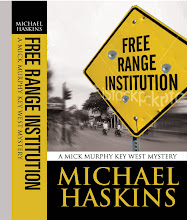Writers, both published and unpublished, continue to learn their craft everyday.
Sometimes we, as writers, overlook the few good books available that explain the rules of how and what we do. I don’t mean the glut of books that tells you how to write the best selling novel. Nope. I am talking about the books that explain the rules and even how to break them and how the rules are changing, being challenged.
I have talked a few times at the college library and other events about writing. I have always brought three books with me.
The first two books explain writing – journalist and novelist – by examining style and rules and the why-and-wherefore of the rules. Both books have been of great value to me as both a journalist and mystery writer.
King’s book, of course, tells the reader the procedures for writing that work for him. Most of them work for me. I suggest, in my talk, that these books will help anyone interested in fiction or journalism.
God, it is said, loves drunks, fools, and Irishmen and I am batting a thousand. Late last week I emailed
The book came Monday and I have begun reading it. I was not the best English student in high school – OK, I was lucky to get by with a C- – but if they taught English using
Get the title of some of his chapters: Enjoy, rather than fear, words that sound alike; Learn seven ways to invent words; Use the period to determine emphasis and space; Use the semicolon as a ‘swinging gate.’ The list goes on.
Just as the publishing world is changing, so is the world of grammar. Some fight the changes and some, like
I recommend “The Glamour of Grammar” to anyone that wants to write and understand the why and how to use grammar for today. I will be adding it to my traveling book collection, if I am eve asked to speak again.
It is also good to finally realize that while
Google Poytner Institute and you too can get its almost daily report that runs
















